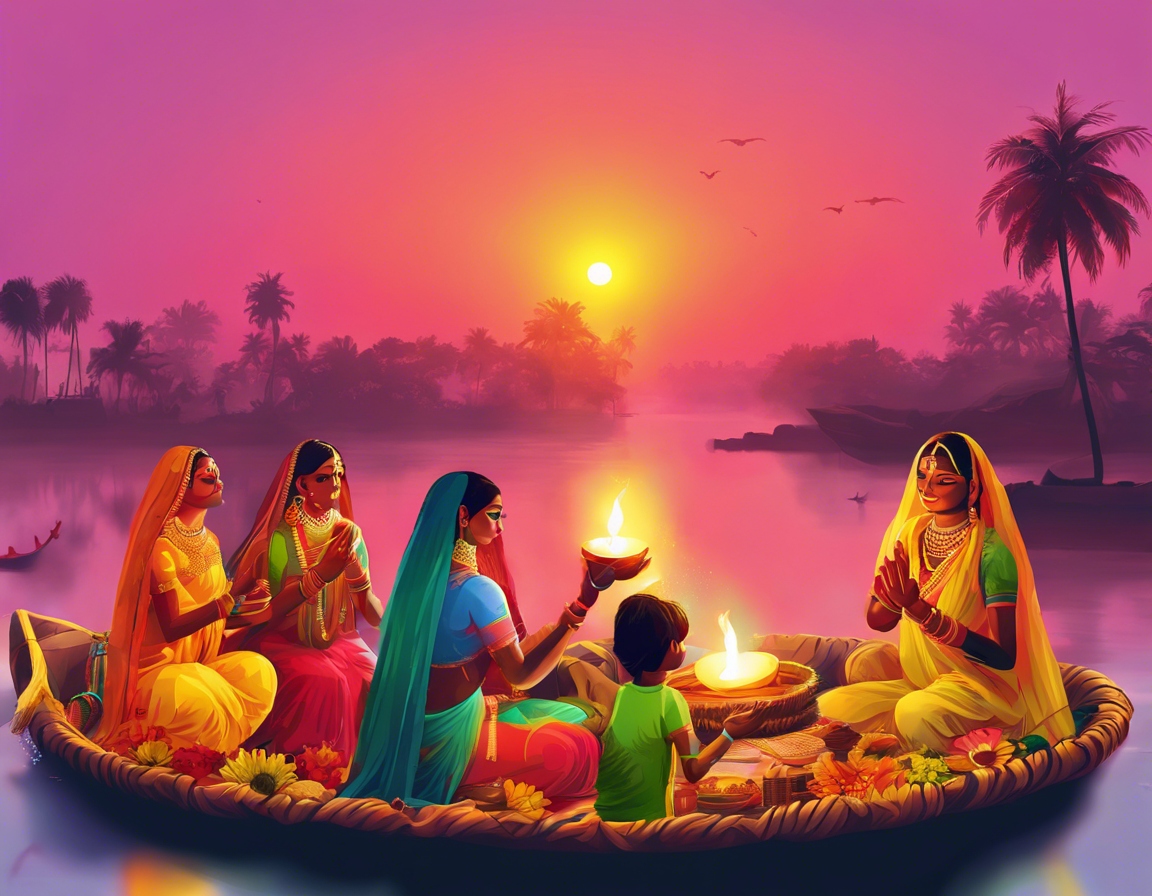Chhath Puja, also known as Surya Shashti, is a prominent Hindu festival dedicated to worshipping the Sun God, Surya. This ancient festival is mainly observed by people from the Indian states of Bihar, Jharkhand, Uttar Pradesh, and Nepal. Chhath Puja is celebrated with great enthusiasm and devotion, as it is considered to be a way of expressing gratitude to the Sun God for sustaining life on Earth. The festival is observed over four days, during which devotees perform various rituals and offer prayers to the Sun God.
History and Significance of Chhath Puja
Chhath Puja has its roots in ancient Hindu scriptures, with mentions in the Rigveda and the Skanda Purana. It is believed to date back to the Vedic times when it was performed by Draupadi, the wife of the Pandavas, to seek blessings for their well-being. The festival also finds mention in the Mahabharata, highlighting its prominence in Hindu mythology.
The significance of Chhath Puja lies in its connection to the Sun God, the primary source of energy and life on Earth. By offering prayers and performing rituals dedicated to Surya, devotees seek blessings for prosperity, health, and longevity. The festival is also a way of expressing gratitude to the Sun God for the energy provided for agriculture and sustenance.
Rituals and Traditions of Chhath Puja
The four-day festival of Chhath Puja follows a strict regimen of rituals and traditions:
Nahay Khay (Day 1)
- Nahay Khay: On the first day, devotees take a holy dip in the river and consume a simple meal.
- Daytime Fasting: During the day, devotees observe a fast without consuming even water.
Kharna (Day 2)
- Kharna: On the second day, devotees observe a day-long fast, breaking it only in the evening after sunset.
- Lohanda and Kosi: They prepare thekua, a special sweet dish, as an offering to the Sun God and distribute it among family and friends.
Sandhya Arghya (Day 3)
- Sandhya Arghya: Devotees offer prayers to the setting sun, known as Sandhya Arghya.
- Ritual Offerings: They offer a combination of fruits, sugarcane, and other traditional items to the Sun God.
Usha Arghya (Day 4)
- Usha Arghya: On the final day, devotees offer prayers to the rising sun, known as Usha Arghya.
- Chhathi Maiya Pooja: They seek blessings from Chhathi Maiya, the sister of Surya, as a part of the rituals.
Chhath Puja 2023 Date
The date for Chhath Puja 2023 has been announced as [insert date here]. Devotees eagerly await this auspicious festival to celebrate and express their reverence to the Sun God.
FAQs about Chhath Puja:
- What is the significance of Chhath Puja?
-
Chhath Puja is significant as a way of expressing gratitude to the Sun God for sustaining life on Earth and seeking blessings for prosperity and well-being.
-
How is Chhath Puja celebrated?
-
Chhath Puja is celebrated over four days with rituals like Nahay Khay, Kharna, Sandhya Arghya, and Usha Arghya involving fasting, offering prayers, and making ritual offerings to the Sun God.
-
Which regions in India celebrate Chhath Puja?
-
Chhath Puja is mainly celebrated in the states of Bihar, Jharkhand, Uttar Pradesh, and Nepal, where it holds cultural and religious significance.
-
Why is the Sun God worshipped during Chhath Puja?
-
The Sun God is worshipped during Chhath Puja as the primary source of energy and life on Earth, symbolizing health, prosperity, and longevity.
-
What is the traditional food prepared during Chhath Puja?
- Thekua, a special sweet dish made of wheat flour, jaggery, and ghee, is a traditional food prepared and offered during Chhath Puja rituals.
Chhath Puja is not just a festival but a way of connecting with nature and expressing gratitude for the blessings of life. It is a time of devotion, fasting, rituals, and community celebrations, all centered around the worship of the Sun God, Surya. The upcoming Chhath Puja 2023 promises to be a joyous occasion for devotees to come together, pray, and celebrate the divine energy that sustains us all.


